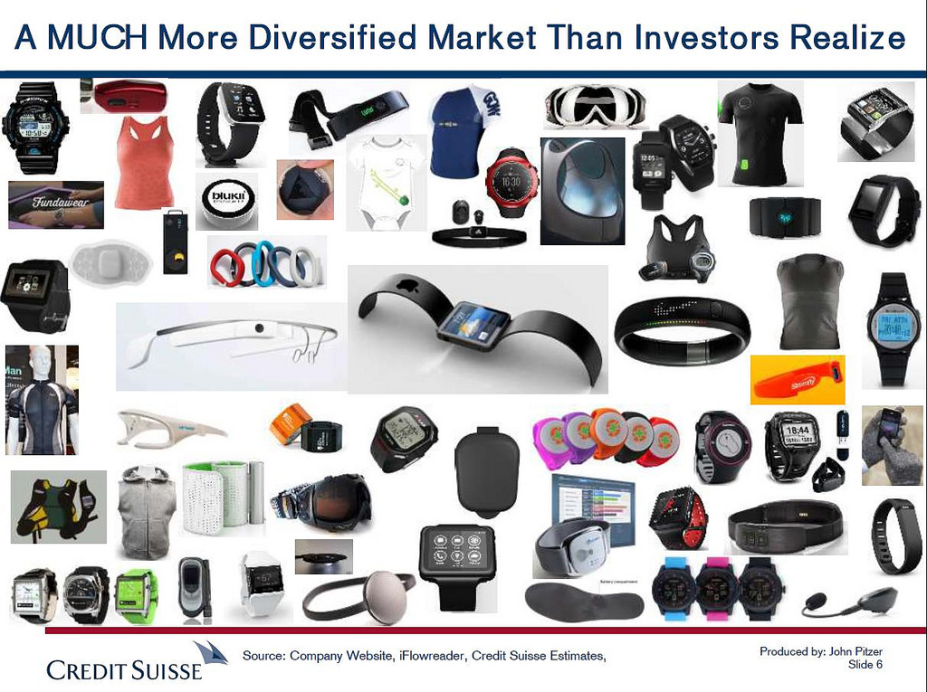Apple’s Health App and HealthKit – Platforms for Digital Health?
 Game on….I think we just witnessed a big next generation leap in Healthcare Data and Analytics. Apple jumped into the health information business on June 2, 2014, launching both a new health app and a cloud-based health information platform with IOS 8.
Game on….I think we just witnessed a big next generation leap in Healthcare Data and Analytics. Apple jumped into the health information business on June 2, 2014, launching both a new health app and a cloud-based health information platform with IOS 8.
The new App, called simply “Health”, will collect a number of body metrics including blood pressure, heart rate, and stats on diet and exercise. Health will constantly monitor key health metrics (like blood sugar or blood pressure), and if any of them begin to move outside the healthy range, the app can send a notification to the user’s doctor. What Apple does well as usual is providing simple, easy-to-use dashboards for health and fitness.
The Health app will share all its information with a new cloud platform called “HealthKit.” The new health cloud platform is designed to act as a global repository for all the user’s health information. It will accept data collected by a variety of third-party devices and apps. For instance, Nike is now working to makes its health and fitness apps integrate with HealthKit.
HealthKit cloud-based platform is where the real heart of the operation is. It uses real-time and historical data, aggregating data from all the devices tracking vital statistics. HealthKit will allow you to know more about your body and track your every step. HealthKit also allows you to share data with healthcare Providers and even Payors.
Apple’s iPhone is essentially going from part-time health stat monitor to full-time mobile monitoring unit.
How do Health App and HealthKit fit together?
What if you (and authorized healthcare professional) can listen to your body 24×7?
While developers use HealthKit, consumers will see the Health app. The concept is similar to Apple’s Passbook app, the iPhone’s virtual pocket for things like airline boarding passes, movie tickets and coupons. It will be able to pull in data from other third-party apps such as Nike to keep all your health-related information in one hub.
Health works with Apple’s M7 chip, first introduced in the iPhone 5s, which tracks motion stats and enables the collection of much of the metrics HealthKit aims to collect. [the M7 motion coprocessor and Core Motion framework combine to efficiently measure motion and heading data from the accelerometer, gyroscope, and compass]
How well Health will work with older iPhone models without onboard data collection is unclear. Regardless, Health and HealthKit sound like the software bedrock for the iWatch concept — a smartwatch/wearable of some form directly from Apple – coming next I would expect.
According to Apple’s Craig Federighi, Today’s apps like FitBit, Jawbone UP can now track “everything from monitoring your activity level, to your weight, to chronic medical conditions like blood pressure and diabetes.” But right now that information lives in silos. Difficult to get a single comprehensive picture. Apple is seeking to breach these silos.
Apple is also working with the providers to develop detailed use cases which have been lacking so far. Apple apparently worked with doctors at the Mayo Clinic to devise ways for health care providers to access and add to patient information in HealthKit. Apple also has been working with a large group of hospitals to figure out how HealthKit data can be made available to hospital information systems.
Personal health data can also flow from HealthKit into the Mayo app and then into the Electronic Health Record (EHR).
What’s Next for Digital Health?
What’s next? Apple, like Samsung, is innovating beyond wearable tech, and into new territory, where blood flow, hydration level, skin temperature, and more are being tracked constantly. The device itself looks like a watch, but it has a continues ticker, showing your heart rate and other variables.
Samsung has announced an equivalent of HealthKit called SAMI (Samsung Architecture Multimedia Interactions). I won’t be surprised if Google is not far behind. They can’t allow Apple to distance itself in value creation.
Getting the involvement of the healthcare community from the start is critical for the success of HealthKit. The hockey stick like adoption will occur if preventive healthcare outcomes truly can be impacted. With Accountable Care Act, keeping patients healthy is the name of the game for healthcare providers. Insurance payers are using a “value-based” model to reimburse health care providers. For instance, providers earn more money from payers if they keep post-op patients healthy enough to stay away from the hospital for the first 30 days after surgery. If many of surgery patients are readmitted within 30 days, the provider gets less reimbursement.
I would not be surprised if some forward thinking Health Insurance Payor subsidizes iPhone purchases in order to collect data or provides incentives in the form of lower premiums (like car insurance firms discounting for good driving habits).
Apple vs. Google
After Health… the next battleground seems to be home automation. Google buys NEST Home Automation Solutions for 3.2 Bln. To compete… Apple is introducing HomeKit, which includes new tools so all those garage doors, thermostats and smart light bulbs can be operated securely through Apple’s phones and laptops.
HomeKit also allows users to group devices into scenes or control devices individually. A number of lights in a living room could be grouped together to create a relaxing mood, for instance, while others could be turned on while working. Additionally, HomeKit integrates with the Siri personal digital assistant. Users can tell Siri to turn on the lights in the living room or open the garage door.
Integrated experience across all of our devices is the new mantra.
Summary
Internet of Things just got more real.
The data from HealthKit needs to be stored, secured and processed to bring customized and extensible experiences. Big Data and Cloud computing combined with Wearables and Sensors provides a new environment to collect, process and produce information based on the data collected. In many cases this data will be composed of multiple sensors readings, and need to be processed in order to produce new Customer and User Experiences. Creating a delightful user experience for Health app is vital for adoption.
Notes and References
Quantified Self, Ubiquitous Self Tracking = Wearable Computing – I wrote a detailed blog posting several months ago. See this for background on Health Tracking.
2. Cloud Based Health Analytics and Decision Support Solutions Just got a lot more interesting.
3. http://www.apple.com/ios/ios8/health/
Mobile FIRST is the strategy of the future
Posts by Tag
- big data (41)
- advanced analytics (38)
- business perspective solutions (30)
- predictive analytics (25)
- business insights (24)
- data analytics infrastructure (17)
- analytics (16)
- banking (15)
- fintech (15)
- regulatory compliance (15)
- risk management (15)
- regtech (13)
- machine learning (12)
- quantitative analytics (12)
- BI (11)
- big data visualization presentation (11)
- community banking (11)
- AML (10)
- social media (10)
- AML/BSA (9)
- Big Data Prescriptions (9)
- analytics as a service (9)
- banking regulation (9)
- data scientist (9)
- social media marketing (9)
- Comminity Banks (8)
- financial risk (8)
- innovation (8)
- marketing (8)
- regulation (8)
- Digital ID-Proofing (7)
- data analytics (7)
- money laundering (7)
- AI (6)
- AI led digital banking (6)
- AML/BSA/CTF (6)
- Big Data practicioner (6)
- CIO (6)
- Performance Management (6)
- agile compliance (6)
- banking performance (6)
- digital banking (6)
- visualization (6)
- AML/BSA/CFT (5)
- KYC (5)
- data-as-a-service (5)
- email marketing (5)
- industrial big data (5)
- risk manangement (5)
- self-sovereign identity (5)
- verifiable credential (5)
- Hadoop (4)
- KPI (4)
- MoSoLoCo (4)
- NoSQL (4)
- buying cycle (4)
- identity (4)
- instrumentation (4)
- manatoko (4)
- mathematical models (4)
- sales (4)
- 2015 (3)
- bitcoin (3)
- blockchain (3)
- core banking (3)
- customer analyitcs (3)
- direct marketing (3)
- model validation (3)
- risk managemen (3)
- wearable computing (3)
- zero-knowledge proof (3)
- zkp (3)
- Agile (2)
- Cloud Banking (2)
- FFIEC (2)
- Internet of Things (2)
- IoT (2)
- PPP (2)
- PreReview (2)
- SaaS (2)
- Sales 2.0 (2)
- The Cloud is the Bank (2)
- Wal-Mart (2)
- data sprawl (2)
- digital marketing (2)
- disruptive technologies (2)
- email conversions (2)
- mobile marketing (2)
- new data types (2)
- privacy (2)
- risk (2)
- virtual currency (2)
- 2014 (1)
- 2025 (1)
- 3D printing (1)
- AMLA2020 (1)
- BOI (1)
- DAAS (1)
- Do you Hadoop (1)
- FinCEN_BOI (1)
- Goldman Sachs (1)
- HealthKit (1)
- Joseph Schumpeter (1)
- Manatoko_boir (1)
- NationalPriorites (1)
- PaaS (1)
- Sand Hill IoT 50 (1)
- Spark (1)
- agentic ai (1)
- apple healthcare (1)
- beneficial_owener (1)
- bsa (1)
- cancer immunotherapy (1)
- ccpa (1)
- currency (1)
- erc (1)
- fincen (1)
- fraud (1)
- health app (1)
- healthcare analytics (1)
- modelling (1)
- occam's razor (1)
- outlook (1)
- paycheck protection (1)
- personal computer (1)
- sandbox (1)
Recent Posts
Popular Posts
Here is a funny AI story.
Every community bank CEO now faces unprecedented...
On May 13, 2025, the U.S. government announced...








